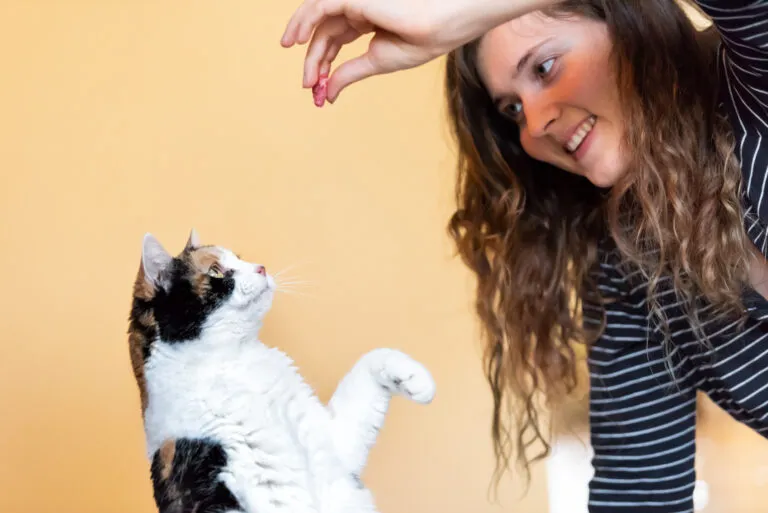Come here
As a cat owner, you probably know that our beloved felines come to us reliably when we call them. However, only if they feel like it or when they smell their bowl full with a delicious meal. You can drastically increase the success rate with some training – at least if your cat is in the mood for it.
If your cat is lying by the radiator asleep with a full stomach, this could reduce the chances of success. This is how you teach your cat ‘come here’: Sit before your cat on the floor and show it the treats in your hand.
If the cat comes to you, say “come here!”, for instance. It’s important that this is always the same instruction – and give it one of the tasty treats once it has come to you. Sit down and repeat this up to ten times. End of the first training session.
Tip: If your little feline follows you to reach the tempting titbits quicker, throw one two metres away and put some distance between you again.
In one of the next training sessions, you can then just say “come here!” and hide the treats. If the cat comes to you, give it the reward it craves. If nothing happens, you have to take a step back.
Tip: An acoustic signal like a clicker isn’t necessarily required for this cat trick. You can use it additionally though: Reward your cat for every step in the right direction with the reinforcing sound.

